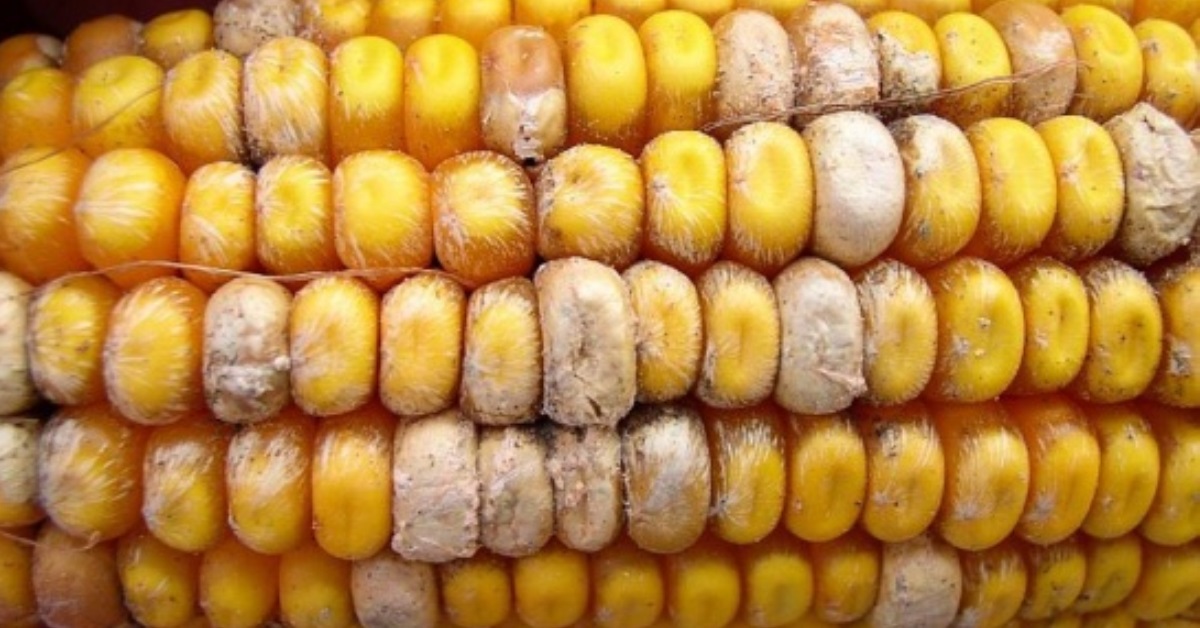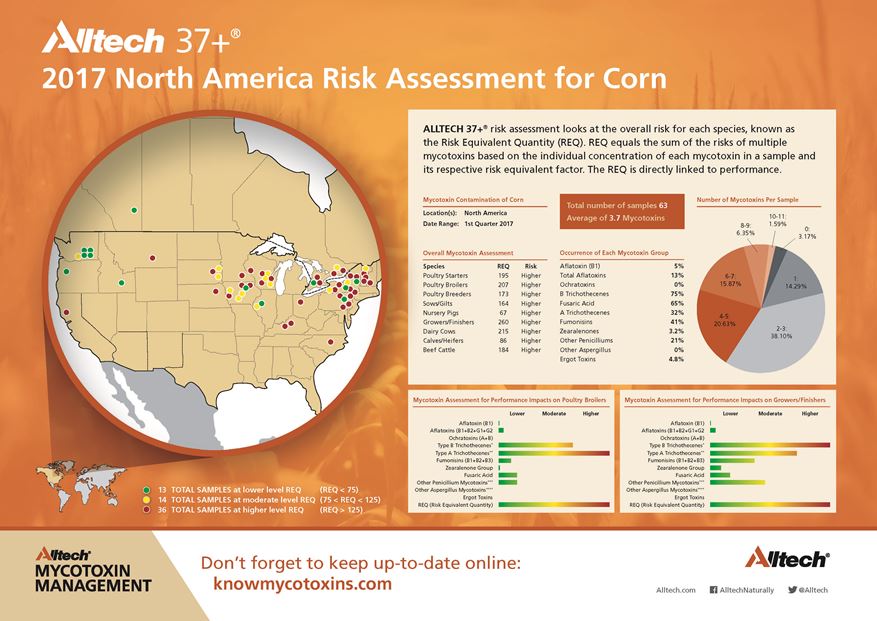
Mycotoxins aren’t new to anyone in the grain and livestock sector. Yet the prevalence of mycotoxins in grain sources varies each year, making it difficult to manage mycotoxin risk without a comprehensive plan.
The Food Safety Modernization Act (FSMA) has classified mycotoxins as a hazard, which means they will need to be addressed as part of each food manufacturer’s food safety plan. Practices to reduce the impact of mycotoxin hazards in animal feeds include sampling and testing of incoming grains, and maintaining clean equipment.
Though this may seem like a daunting task, there are tools and resources available to help identify and minimize these risks. A comprehensive plan should include sampling of incoming raw materials, as sampling is the most important part of understanding your mycotoxin risk. Errors can commonly occur when obtaining feed samples; it is therefore critical to follow a standard protocol for obtaining a representative sample.
Testing options
Once the sample is obtained, there are multiple options for testing to indicate which mycotoxins may be present, as well as their level of existence in feedstuffs. One such test that can be used to detect multiple mycotoxins is the Alltech 37+® mycotoxin analysis. This test examines more than 37 individual mycotoxins and provides a comprehensive look at the risks associated with animal performance.
There are also quantitative quick tests available. The new Alltech® RAPIDREAD™ kits are portable and are designed to work equally well whether on-farm or in the feed mill, providing an easy method to objectively read, store and analyze results from lateral flow strips. This quick-test technology allows for rapid testing of an individual mycotoxin with a simple water-based extraction and provides the opportunity to solve mycotoxin issues faster than ever before.
Continuous monitoring of mycotoxin levels in raw ingredients is only one part of a comprehensive plan to reduce food hazards. Another critical control point in minimizing mycotoxin risk involves frequent cleaning and maintenance of equipment. If equipment sits uncleaned for long periods of time, buildup of raw materials and feedstuffs can accumulate and create the opportunity for mold and bacteria to grow. Having a regularly scheduled maintenance plan can help ensure equipment gets cleaned and greatly reduces the risk of contamination.
Valuable resources
Another important step in reducing the risk of mycotoxins is monitoring and understanding the mycotoxin presence in your region of the country. The Alltech® Mycotoxin Management team provides a comprehensive map of mycotoxin risk based on samples submitted to the Alltech 37+® mycotoxin analytical services laboratory. The figure below is the latest map, which outlines the potential mycotoxin risk from the 2016 corn crop across North America. As you can see, the majority of corn analyzed falls into a high-risk category for mycotoxin impacts on animal performance. A full-page version of this map can be found in the PDF at the link above.

Another valuable resource for tracking mycotoxin prevalence is the Neogen Monday Mycotoxin and Crop Report. This weekly video report covers the most recent information on crop conditions and mycotoxin levels observed across the country. As of Monday, Aug. 28, 2017, approximately 12 percent of the current corn crop is in poor to very poor condition. The states that currently contain double digit percentages of poor corn conditions are: South Dakota, North Dakota, Indiana, Illinois, Kansas, Nebraska, Iowa and Michigan.
The effects of mycotoxins are well-understood. The greater challenge is determining when and where they will occur. Utilizing information services, implementing a sampling and testing program, and having a food safety plan that addresses these risks plays an important role in minimizing the negative effects of mycotoxins on animal performance.
For additional information about mycotoxins visit: www.knowmycotoxins.com.
- Log in to post comments
